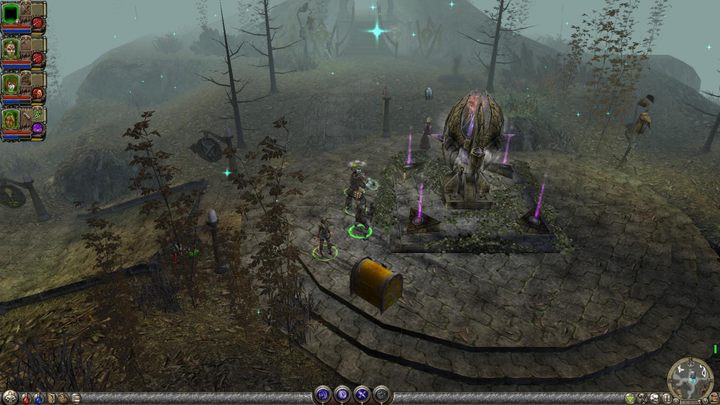Stay awake, explore, level up. Rediscovering best, lost hack'n'slash mechanics
Table of Contents

Analyzing the worlds that hack'n'slash creators usually take us to, one could assume that the maps that everyone uses are filled to a large extent with whiteness and fog of war, and few are brave enough to explore new areas and fill those white spots. The canon established by Diablo 2 years ago (plains, desert, jungle, hell/winter land) has become the template for every subsequent title for years. It's nice when someone tries to break out of this stagnation, and although the new titles have definitely left these tracks, juxtaposing the realities of Path of Exile , Wolcen: Lord of Mayhem or Last Epoch , you can go crazy from the feeling of deja vu.
Still, you can catch a deeper breath while playing such games as Space Siege (Sci-Fi setting), Incredible Adventures of Van Helsing (a world straight from Bram Stoker's Dracula ) or even inexplicably ringing in my hippocampus with a powerful bell of nostalgia Frater , offering a dot-to-dot cliché copying the scheme of subsequent Diablo acts, but drenched in steampunk sauce.
We look at the worlds created in hack'n'slashes rather hastily, as our eyes are flooded with torrents of gore, pushing forward and pumping blood soaked with adrenaline into the heart, depriving other hearts of it. Therefore, level designers do not pay much attention to exploration and the experience it brings. There's more! Procedurally generated levels are a standard nowadays. However, those who do not entrust their worlds to the randomizing machines do not always encourage the players to look into every corner and derive satisfaction from it. The creators of Dungeon Siege 2 approached this topic in an entirely different manner , as their world is full of secrets, hidden chambers, environmental puzzles and multi-stage side quests offering backtracking combined with unlocking new areas of the map.
An unusual implementation of the in-game world is the universe proposed in the first Sacred . We have a huge, level designer project, and most importantly, an open world, which is unique in this genre. Was it a tailor-made action RPG solution? Without detracting from the meritorious work of Ascaron Software, the exploration of Ancaria looms in my memories as a strenuous experience. This image consists of the overwhelming vastness of the world, constantly traversing the same areas with unscaled mobs killed with the sole step of an armed boot, or sometimes desperate searches for intricately hidden passages connecting individual regions.
Grim Dawn, on the other hand, is a title that combines exploration directly with the development system , scattering shrines all over Cairn, whose rebuilding or cleaning gives you a chance to earn dedication points. These, in turn, fuel vast and complex constellations, each containing a plethora of unlockable passive perks.
And since we're on the subject of shrines, I would like to give a heartfelt thanks to Gas Powered studio and write again aboutDungeon Siege 2. The idea of shrines activated with chants is brilliant and, of course, lost in the mists of time. What is it about? Well, the genre standard, i.e. shrines that temporarily strengthen the hero, can be activated in DS2 at your whim, i.e. triggering the selected effect by performing a chant nearby. Sometimes we get the most ordinary increase in damage, armor or resistance in this way, but in exceptional cases, singing can summon a group of enemies, give us a powerful item, allow us to talk to ghosts, open access to blocked locations or ... kill the entire team.

